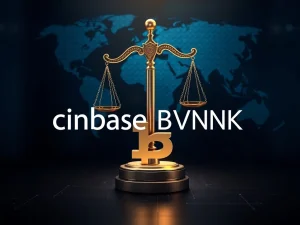Dangerous Crypto Scam: How Zero-Value Transfer Works and Wallet Security Tips

The world of cryptocurrency offers exciting opportunities, but it also harbors hidden dangers. One particularly insidious threat gaining prominence is the zero-value transfer scam. Unlike hacks that require access to your private keys or seed phrase, this deceptive method exploits simple human error and the nature of blockchain addresses, putting your wallet security at risk without direct compromise. Understanding how this crypto scam works is crucial for anyone holding digital assets.
What is a Zero-Value Transfer Scam?
A zero-value transfer scam is a clever phishing technique that doesn’t involve gaining unauthorized access to your wallet. Instead, it relies on tricking you into sending funds to the wrong address yourself. It’s a specific type of address poisoning, a broader category of scams that manipulate wallet addresses visible to the user.
How Does This Crypto Scam Work?
This scam preys on the common practice of copying and pasting wallet addresses. Here’s the breakdown:
- Target Identification: Scammers monitor public blockchain transactions to identify active wallets and the addresses they frequently interact with.
- Vanity Address Creation: They generate a ‘vanity address’ – a new wallet address that is designed to look similar to one the target has used before. Crucially, this fake address will share the same starting and ending characters as a legitimate address from the victim’s transaction history.
- Poisoning the History: The scammer sends a transaction of zero value (or a tiny dust amount) from their fake vanity address to the victim’s wallet. This places the scammer’s address into the victim’s transaction history, right alongside legitimate past transactions.
- The Trap: When the victim later wants to send funds to the legitimate address they’ve used before, they might scroll through their transaction history and copy the scammer’s fake address by mistake, especially if they only quickly check the beginning and end characters.
- Irreversible Loss: The victim initiates and confirms a transaction to the scammer’s address, believing it’s the correct one. Due to the immutable nature of blockchain, the transaction cannot be reversed, and the funds are lost.
This method is effective because wallet addresses are long, complex strings of characters, making them difficult to verify manually every time. Users become complacent, relying on copying from familiar history.
Address Poisoning: More Than Just Zero-Value Transfers
Address poisoning is an umbrella term covering various tactics that manipulate visible wallet addresses. The zero-value transfer is just one method. Other related techniques include:
- Impersonation: Creating vanity addresses that mimic high-profile entities (exchanges, protocols, public figures) rather than just past contacts.
- QR Code Manipulation: Generating fake QR codes that encode scammer addresses and distributing them online or even physically.
- Malware Interception: Using malicious software that detects when a user copies a wallet address and replaces it with the scammer’s address on the clipboard.
- Smart Contract Exploits: Attacking poorly coded smart contracts to manipulate addresses or variables during transactions.
These methods highlight that protecting your wallet security requires vigilance beyond just safeguarding private keys.
The Cost of Address Poisoning Attacks
The impact of address poisoning is significant, resulting in millions in losses for unsuspecting users. Data shows this isn’t a minor threat:
- In May 2025, a single incident saw an investor lose $2.6 million to a zero-value transfer scam involving USDT.
- Analysis between 2022 and 2024 revealed around 17 million addresses were targeted on Ethereum, with 7.2 million being zero-transfer attempts. These led to nearly $80 million in losses from 1,738 successful attacks.
- BNB Chain saw even more attempts, close to 230 million, resulting in $4.5 million lost from 4,895 successful attacks during the same period.
These statistics underscore that address poisoning is a serious and costly crypto scam affecting major blockchains.
Essential Crypto Security Tips Against Address Poisoning
While address poisoning is cunning, several proactive steps can significantly enhance your crypto security and protect you from this crypto scam:
- Verify the ENTIRE Address: This is the single most important step. Before confirming ANY transaction, double-check that the recipient address exactly matches the intended address, from the first character to the last. Do not rely on checking only the beginning and end.
- Use Naming Services: Services like Ethereum Name Service (ENS) provide human-readable names (e.g., ‘yourname.eth’) that resolve to wallet addresses. Using names is far less prone to the copy-paste errors that fuel address poisoning.
- Be Wary of Small Transfers: Unexpected tiny transfers to your wallet might be scammers attempting to ‘poison’ your history. Be cautious if you see these.
- Generate New Addresses: For receiving funds, consider generating a new address for each transaction when possible. This limits the data available for scammers to mimic past interactions.
- Keep Addresses Private: Avoid broadcasting your primary receiving addresses publicly if not necessary.
- Use Reputable Wallets with Security Features: Some modern wallets include built-in phishing detection or warnings for suspicious addresses.
- Install Security Software: Use reputable antivirus and anti-malware software. Browser extensions like Wallet Guard or Scam Sniffer can also help detect malicious sites and address tampering.
- Stay Informed: Follow reliable sources for Web3 security alerts from firms like Cyvers, PeckShield, CertiK, or security researchers like ZachXBT.
- Exercise Caution with QR Codes: Always verify the address encoded in a QR code before scanning, especially if the source is untrusted.
- Use Audited Smart Contracts: When interacting with DeFi or other protocols, ensure the smart contracts have been audited by reputable firms to minimize exploit risks.
Protecting yourself from address poisoning, including the zero-value transfer technique, requires diligence. By adopting these crypto security practices and being meticulous when sending funds, you can significantly reduce your risk of falling victim to this costly crypto scam and maintain robust wallet security.







